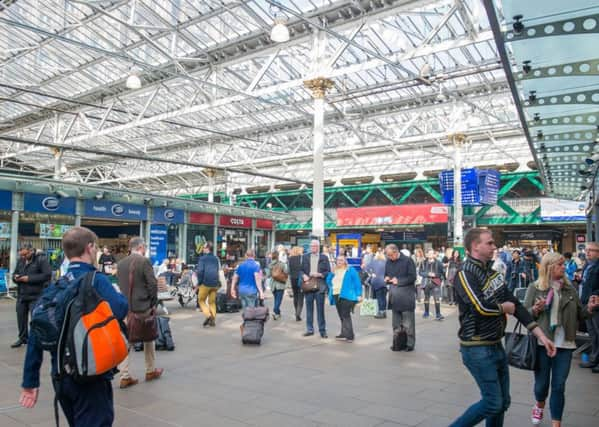Kezia Dugdale: Get Edinburgh's transport fit for the future


Deep in the basement of the city, this Victorian station is part of daily life for tens of thousands of residents.
But what if you don’t live in Edinburgh and you’re visiting our magnificent city?
Advertisement
Hide AdAdvertisement
Hide AdIf you’ve arrived by ScotRail, the chances are that you’re late. Network faults – which ScotRail can do little about – are causing major disruption, with punctuality last month the worst recorded for June in over a decade.
Then you must choose your ascent to the city, with most visitors likely to follow the signs for the world-famous Princes Street. But if you’re looking for a taxi, it’s the rear exit you need, where you will emerge blinking into a chaotic scene of confused passengers, a makeshift taxi rank, and private cars desperately hunting for somewhere to drop off or pick up.
Waverley has come some way since former city leader Donald Anderson famously dubbed it a “gaping hole in the heart of the city”, but it’s still a major let-down for visitors.
We are stuck with a station at the bottom of a valley, so there are limitations as to what can be improved. But with footfall expected to nearly double to 40 million by 2024, those involved in the new Waverley Masterplan have a mammoth task on their hands. For the future economic prosperity of the Capital, they have to get this right.
Advertisement
Hide AdAdvertisement
Hide AdIf you travel from Waverley in a taxi, there’s an above-average chance your driver will comment on the roadworks in the city. For years, cabbies have moaned about the state of the roads and insist it’s worse than it ever has been. At times, it does feel like the disruption is never-ending.
But there was at least some good news last week when it was announced that Leith Street is to partially reopen after nearly 11 months. The closure has caused congestion and chaos, particularly for bus passengers.
However, I hope we’ll forgive the disruption it caused once we see the new design with widened pavements and a dedicated two-way cycle lane between Calton Road and Picardy Place. Our transport network should not just be designed for motorists, but pedestrians and cyclists too, so this is a positive step.
The number of people living, working and visiting our city is going to continue growing at an extraordinary pace. That’s why it’s vital that not only is Waverley made fit for the future, but our entire transport network is.
Advertisement
Hide AdAdvertisement
Hide AdSoon we will have bikes-for-rent – or “Boris bikes” – across Edinburgh, with hundreds available for use by residents and tourists. This has been commonplace in London and European cities for years, so while we have been too slow to get this off the ground, it’s certain to be a roaring success.
As well as reducing congestion and helping people get fitter, there are obvious environmental benefits from this. And if we’re serious about green transport, then we need to also get better at promoting electric cars. There are only around 40 publicly accessible charging points in the Capital, and that needs to dramatically increase.
Then there is the question of the tram extension. Controversial? Yes. Essential? Yes. Countless mistakes were made when the current tram network was being planned and built, and I was outspoken in demanding a public inquiry. We got one, and there will be major lessons to learn.
But if we want to improve our public transport network, an extension is required – and this time we must get it right. Taking trams into Edinburgh’s most densely populated area will improve air quality, help grow the economy and reduce congestion.
Our city is the best place in Britain to live, work and play. So let’s keep it moving.
